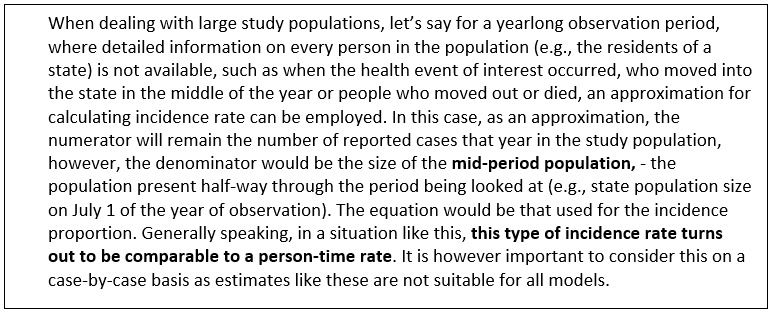3. Calculating incidence
3.2. Incidence rate
An incidence rate can be calculated only when there is ongoing follow-up of subjects who are at risk at the beginning of an observation period. One can calculate each individual's "time at risk" from when health events of interest occur and approximately when losses to follow up occur. The time at risk for each subject is the time from the beginning of their observation until one of three “endpoints” are reached:
- An individual develops the health event of interest (thus becoming no longer "at risk")
- An individual becomes lost to follow up or dies. If this occurs, we count the time that they were observed to be disease-free, but they stop contributing "time at risk".
- The study ends after the specified time period.
One then adds up the total "time at risk" among all persons in the group (i.e., total person-time) and uses this as the denominator. Therefore, person-time takes into account the number of people in the group and their time at risk.
Then the equation for calculating incidence rate reads:

Time is an inherent part of the calculated incidence rate, but one should still state the time period over which it was calculated, e.g., "The incidence rate was 163 per 100,000 person-years from 2020 to 2021."; however, to say "The incidence rate was 163 new cases of a health event/disease per 100,000 persons from 2020 to 2021” is easier to understand (see points to consider chapter 4 in this book).
